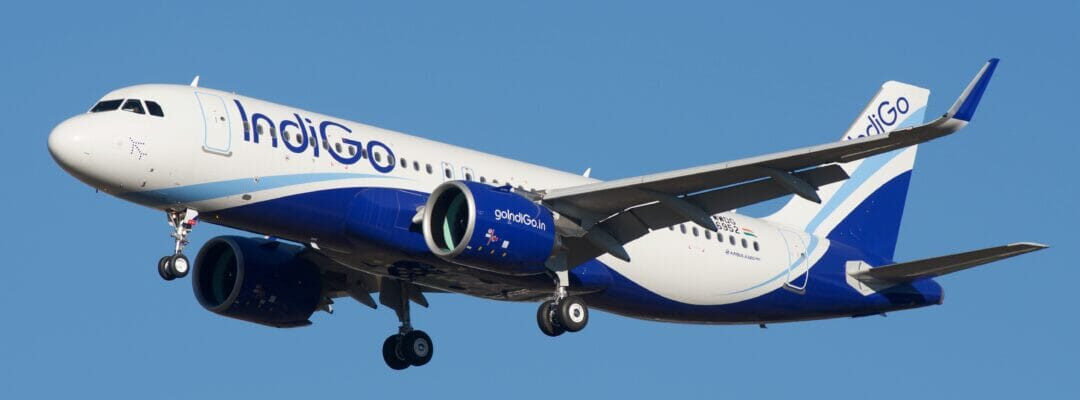IndiGo returns to Guangzhou – Air Cargo Week
- Direct flights between India and China to resume with IndiGo relaunching daily non-stop services from Delhi and Kolkata to Guangzhou from October 26, 2025, reopening an important air cargo and trade corridor that had been dormant since 2020.
- This route efficiently restores more than $10 billion in air-freight cargo annually, enhances cold chain reliability for pharmaceuticals, and improves access to China’s Pearl River Delta and India’s industrial corridors while reducing reliance on third-country hubs.
- The corridor provides a logistics bridge amid US-China trade tensions, supports South-South trade initiatives such as IPEF and BRICS+, and enables faster shipments of high-value goods including electronics, medical devices and renewable energy components.
The resumption of direct flights between India and mainland China represents more than just the return of passenger connectivity – it signals a strategic realignment in regional air cargo and trade logistics. IndiGo’s decision to relaunch daily non-stop services from Delhi and Kolkata to Guangzhou from October 26, 2025 reopens a trade artery that has been dormant since 2020.
Reopening this corridor offers the potential to restore supply chain resilience, reduce dependence on third-country hubs, and re-establish India and China as pivotal logistics nodes within the Indo-Pacific region. It also comes at a time when both countries are recalibrating their trade strategies amid tariff fluctuations and the ongoing trade dispute between the United States and China, making the move as politically significant as it is a trade strategy.
Reconnecting the commercial corridor
Before the pandemic, air cargo flows between India and China exceeded 120,000 tons annually, according to the Airports Authority of India and Chinese customs data. The majority of this cargo moved in the bellies of passenger aircraft operating from Delhi, Mumbai and Kolkata to major Chinese gateways such as Shanghai, Chengdu and Guangzhou. When services were suspended in 2020, shipping companies were forced to divert goods through transshipment hubs in Bangkok, Singapore and Hong Kong, adding up to 24 hours to transit times and increasing costs by up to 15-20%.
The reintroduction of direct capacity – approximately 10-12 tonnes per flight on IndiGo’s Airbus A320neo aircraft – brings efficiency back to a corridor that supports more than US$10 billion of air-freight cargo in a bilateral trade relationship worth US$136 billion in 2024. Key export categories include Indian pharmaceuticals, chemicals, iron and steel and marine products, while China’s exports to India include electronics, communications equipment, solar cells and industrial components.
Since pharmaceuticals alone account for nearly US$800 million of India’s annual exports to China, direct connectivity will enhance the reliability of the cold chain for temperature-sensitive goods such as vaccines and APIs. In turn, Chinese electronics and renewable energy components – which are critical to India’s solar and electric vehicle manufacturing sectors – will benefit from shorter, more predictable supply chains.
Gateway to the Pearl River Delta
Guangzhou’s location within China’s Pearl River Delta – home to the world’s largest electronics and manufacturing cluster – makes it an ideal hub to re-engage with India’s industrial base. The airport handled more than 1.8 million tons of cargo in 2024, ranking among the top five in China in terms of cargo productivity.
For Indian exporters, this connectivity opens direct access to one of the densest logistics ecosystems in Asia. For Chinese shippers, it provides entry into India’s emerging industrial corridors such as the Delhi-Mumbai Industrial Park and the Eastern Dedicated Freight Corridor, both designed to enhance intermodal efficiency.
IndiGo CEO Peter Elbers described the route as a step towards “the seamless movement of people, goods and ideas between two of the world’s most dynamic economies.” He added: “As we take steady steps towards becoming a global player in aviation, this move strengthens our international footprint while contributing to trade resilience.”
With moderate utilization rates of up to 70 percent, IndiGo’s dual routes could add 3,000 to 3,500 tons of annual cargo capacity, easing regional constraints and reducing pressure on legacy hubs such as Singapore and Hong Kong.
Geopolitical context
With the US escalating tariffs on both Indian and Chinese exports, Asia’s two largest emerging markets are increasingly exploring alternative routes and partnerships to maintain trade momentum. India’s production-linked incentives and “Make in India” programs, combined with China’s focus on high-value manufacturing and green technology, are creating a complementary basis for supply chain integration rather than competition.
“The reopening of direct air links between India and China is not just an operational exercise, it is a geopolitical signal,” commented Mr. Piyush Goyal, Minister of Commerce and Industry, Government of India. “For both countries, it creates a logistical bridge that reinforces economic pragmatism even in light of political complications. Trade, after all, cannot afford paralysis.”
Since air freight represents only 3% of total bilateral trade by volume but nearly 25% by value, this connectivity could serve as a catalyst for high-value, low-weight goods such as semiconductors, medical devices and electronics. The service also supports both countries’ ambitions to enhance South-South trade corridors under the Indo-Pacific Economic Framework (IPEF) and BRICS+ cooperation frameworks.
